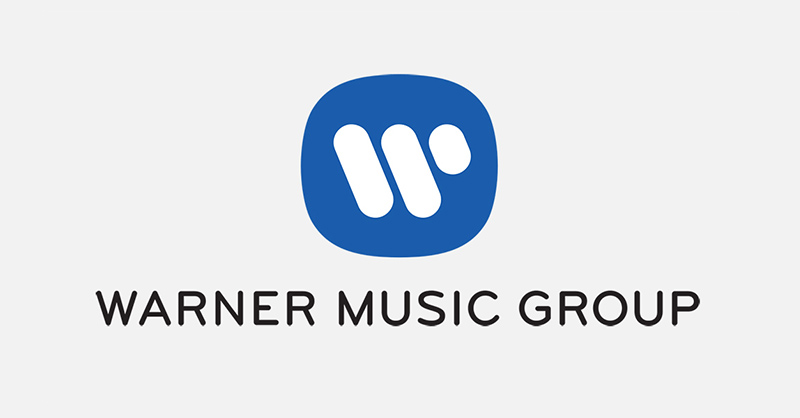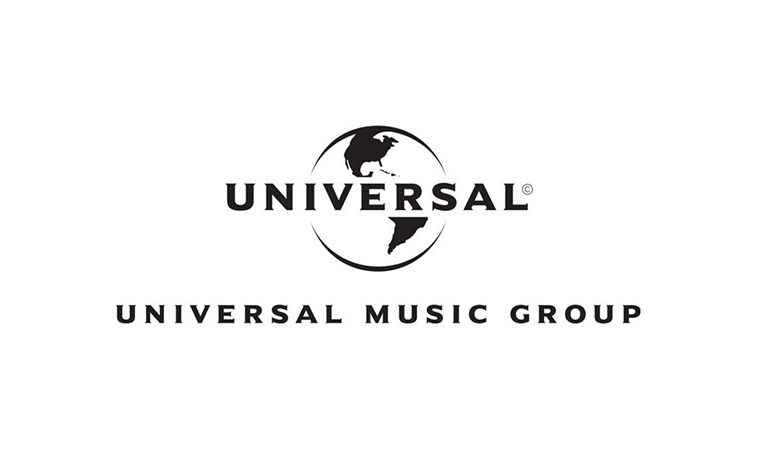
Warner Music Group Corp. today announced its fourth-quarter and full-year financial results for the period ended September 30, 2018.
“We’ve had another terrific year and revenue exceeded $4 billion for the first time in our fifteen-year history as a standalone company,” said Steve Cooper, Warner Music Group’s CEO. “We continue to invest in our business for the benefit of our recording artists and songwriters and to fuel our long-term growth.”
“The fact that we ended the year with over $500 million in cash, despite significant spend on A&R, marketing, M&A and dividends, is evidence of the underlying strength of our business,” added Eric Levin, Warner Music Group’s Executive Vice President and CFO. “We’re on a great run and I’m looking forward to many more years of success.”
Fourth-Quarter Results
Revenue grew 13.3% (or 14.8% in constant currency). Growth in Recorded Music digital, licensing and artist services and expanded-rights revenue and growth in Music Publishing digital, performance, synchronization and mechanical revenue were partially offset by a decline in Recorded Music physical revenue. Revenue grew in all regions. Digital revenue grew 21.4% (or 23.1% in constant currency), and represented 57.4% of total revenue, compared to 53.5% in the prior-year quarter.
Operating income was $16 million compared to an operating loss of $1 million in the prior-year quarter. OIBDA was $72 million, up 20.0% from $60 million in the prior-year quarter and OIBDA margin increased 0.4 percentage points to 6.9% from 6.5% in the prior-year quarter. The increase in operating income, OIBDA and OIBDA margin was the result of revenue growth and lower variable compensation expense, which were partially offset by increased investment in A&R and marketing. OIBDA includes an $11 million benefit from a digital performance underpayment settlement for sound recordings offset by a $4 million true-up of a prior-quarter advance recovery estimate and a $7 million increase in the management fee to Access as a result of higher covenant EBITDA. Adjusted OIBDA rose 61.0% to $95 million and Adjusted OIBDA margin increased 2.7 percentage points to 9.1% from 6.4% due to the same factors which impacted operating income, OIBDA and OIBDA margin.
Net loss was $13 million compared to a net loss of $38 million in the prior-year quarter and Adjusted net income was $10 million compared to an Adjusted net loss of $39 million in the prior-year quarter. The improvement was due to higher operating income, higher other income associated with prior-year-quarter losses on the Company’s Euro-denominated debt due to changes in exchange rates and a prior-year-quarter non-cash loss on investments.
Adjusted operating income, Adjusted OIBDA and Adjusted net income (loss) exclude certain costs related to the relocation of the Company’s U.S. shared service center to Nashville and the Company’s Los Angeles office consolidation and restructuring in the quarter, and certain costs related to the Nashville relocation, Los Angeles office consolidation, restructuring and PLG-related asset sales in the prior-year quarter. See below for calculations and reconciliations of OIBDA, Adjusted operating income (loss), Adjusted OIBDA and Adjusted net income (loss).
As of September 30, 2018, the Company reported a cash balance of $514 million, total debt of $2.819 billion and net debt (total long-term debt, net of deferred financing costs, minus cash) of $2.305 billion.
Cash provided by operating activities was $160 million compared to $226 million in the prior-year quarter. The change was largely a result of timing for deferred revenue and higher royalties payable. Free Cash Flow, defined below, was $114 million compared to $106 million in the prior-year quarter, reflecting lower net cash paid for investments and acquisitions, which was partially offset by higher capital expenditures related to the Los Angeles office consolidation.
Full-Year Results
Total revenue increased 12.0% (or 9.2% in constant currency). Growth in Recorded Music digital, licensing and artist services and expanded-rights revenue and growth in Music Publishing digital, performance, synchronization and mechanical revenue were partially offset by a decline in Recorded Music physical revenue. Domestic revenue rose 10.5% and international revenue rose 12.7% (or 7.8% in constant currency). Prior to intersegment eliminations, domestic and international revenue represented 43.7% and 56.3% of total revenue, respectively, compared to 44.2% and 55.8% of total revenue, respectively, in the prior year. Revenue grew in all regions. Digital revenue grew 20.4% (or 18.5% in constant currency), and represented 56.2% of total revenue, compared to 52.3% in the prior year.
Operating income was $217 million down from $222 million in the prior year and operating margin was 5.4% down from 6.2% in the prior year, driven by higher revenue which was more than offset by increased investment in A&R and marketing as well as higher SG&A expenses including for variable compensation, restructuring and facilities expenses related to the Los Angeles office consolidation. Adjusted operating margin rose 0.7 percentage points to 7.3% from 6.6% in the prior year. OIBDA was $478 million, up 1.1% from $473 million in the prior year and OIBDA margin declined 1.3 percentage points to 11.9% from 13.2% in the prior year due to the same factors that impacted operating income and operating margin. OIBDA includes an $11 million benefit from a digital performance underpayment settlement for sound recordings and a $12 million advance recovery, which were partially offset by a $7 million increase in the management fee to Access as a result of higher covenant EBITDA. Adjusted OIBDA increased 14.0% to $554 million and Adjusted OIBDA margin increased 0.2 percentage points to 13.8% from 13.6% in the prior year due to revenue growth.
Net income was $312 million compared to $149 million in the prior year. Adjusted net income was $388 million compared to $162 million in the prior year, reflecting higher other income related to the net gain on the Spotify share sale, a prior-year loss on revaluation of the Company’s Euro-denominated debt due to changes in exchange rates, a prior-year non-cash loss on investments, lower interest expense in the fiscal year, higher income tax expense related to the impact of tax reform on deferred tax assets in the fiscal year, the prior-year benefit from the reversal of a U.S. deferred tax valuation allowance and the prior-year tax benefit of currency losses on inter-company loans. Net debt (total long-term debt, net of deferred financing costs, minus cash) at the end of the fiscal year was $2.305 billion versus $2.164 billion at the end of the prior year, mainly due to the difference in year-end cash balances.
Adjusted operating income, Adjusted OIBDA and Adjusted net income exclude the impact of certain costs related to the relocation of the Company’s U.S. shared service center to Nashville, the Company’s Los Angeles office consolidation and restructuring and other one-time compensation payments in the fiscal year, and certain costs related to restructuring, the Nashville relocation, and PLG-related asset sales in the prior year. See below for calculations and reconciliations of Adjusted operating income, Adjusted OIBDA and Adjusted net income.
Cash provided by operating activities was $425 million compared to $535 million in the prior year due to improved operating performance offset by higher working capital use associated with timing of royalty payables. Free Cash Flow was $830 million, compared to $409 million in the prior year, predominantly due to proceeds from the sale of equity investments, and lower cash paid for acquisitions, which more than offset higher capital expenditures associated with the Los Angeles office consolidation. Proceeds from the sale of investments were $516 million up from $73 million in the prior year. Cash paid for investments and acquisitions was $23 million compared with $139 million in the prior year. Capital expenditures were $74 million for the fiscal year as compared to $44 million in the prior year.
Fourth-Quarter Results
Recorded Music revenue grew 12.5% (or 13.9% in constant currency). Growth in digital, licensing and artist services and expanded-rights revenue was partially offset by a decline in physical revenue. Digital growth reflects a continuing shift to streaming. Licensing revenue growth was due to increased synchronization activity, timing-related higher broadcast fee income and the impact of acquisitions. The increase in artist services and expanded-rights revenue was largely attributable to higher touring and merchandise revenue, partially offset by the impact of concert promotion divestitures. Recorded Music revenue grew in all regions. Major sellers included Ed Sheeran, TWICE, The Greatest Showman soundtrack, Cardi B and Dua Lipa.
Recorded Music operating income was $31 million, up 121.4% from $14 million in the prior-year quarter and operating margin was up 1.8 percentage points to 3.6% versus 1.8% in the prior-year quarter. OIBDA increased 20.4% to $65 million from $54 million in the prior-year quarter and OIBDA margin increased 0.5 percentage points to 7.5% driven by revenue growth and lower variable compensation expense offset by higher A&R expense. Adjusted OIBDA was $84 million versus $50 million in the prior-year quarter with Adjusted OIBDA margin up 3.2 percentage points to 9.7%. The increase in Adjusted OIBDA and Adjusted OIBDA margin was driven by the same factors which impacted OIBDA and OIBDA margin.
Full-Year Results
Recorded Music revenue rose 11.3% (or 8.5% in constant currency). Growth in digital, licensing and artist services and expanded-rights revenue was partially offset by a decline in physical revenue attributable to the ongoing shift to streaming. Licensing revenue growth was due to increased synchronization activity, timing-related higher broadcast fee income and the impact of acquisitions. Artist services and expanded-rights revenue increased due to currency fluctuations and higher merchandise revenue, which were partially offset by the impact of concert promotion divestitures and the timing of tours. Recorded Music digital revenue grew 19.3% (or 17.3% in constant currency) and represented 60.1% of total Recorded Music revenue versus 56.0% in the prior year. Domestic Recorded Music digital revenue was $1.037 billion, or 71.0% of total domestic Recorded Music revenue, versus 67.2% in the prior year. Major sellers included Ed Sheeran, The Greatest Showman soundtrack, Cardi B, Bruno Mars and Dua Lipa.
Recorded Music operating income was $307 million up from $283 million in the prior year due to revenue growth and operating margin was down 0.3 percentage points to 9.1% versus 9.4% in the prior year due to higher compensation and higher facilities expenses related to the Los Angeles office consolidation. Recorded Music OIBDA increased 6.4% to $480 million and OIBDA margin declined 0.6 percentage points to 14.3% driven by the same factors that impacted operating income and operating margin. Recorded Music Adjusted OIBDA improved 18.6% to $543 million and Recorded Music Adjusted OIBDA margin increased 1.0 percentage point to 16.2% due to revenue growth and revenue mix.



